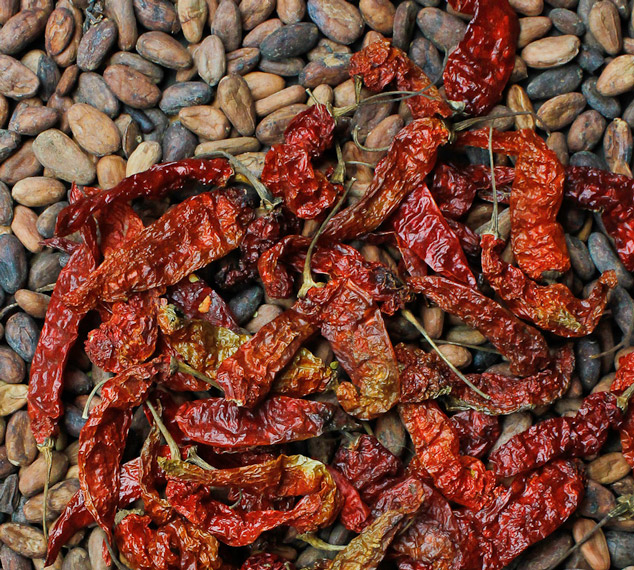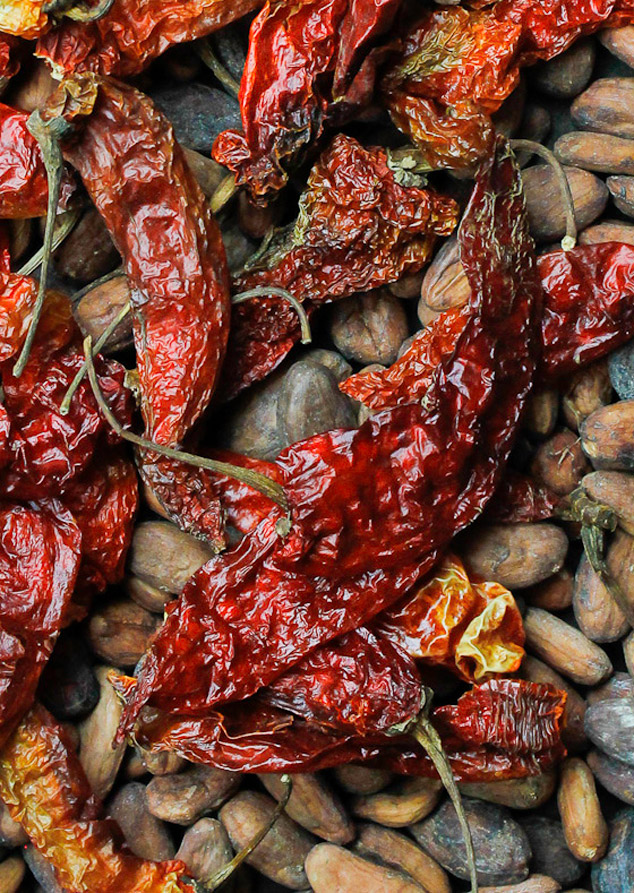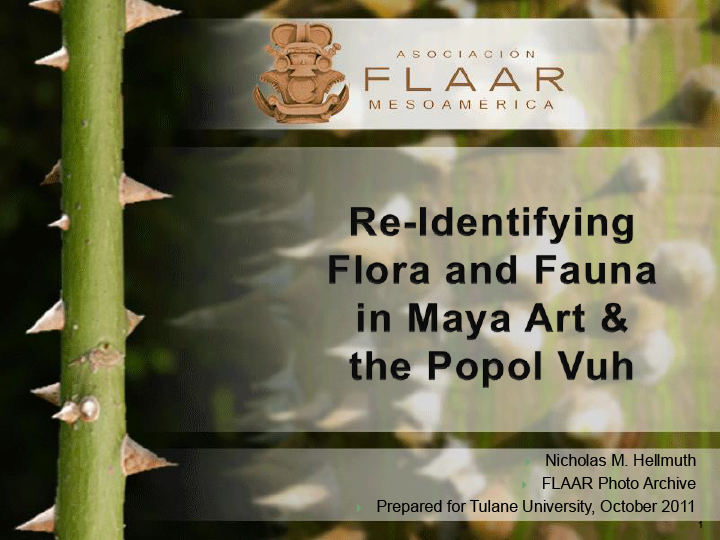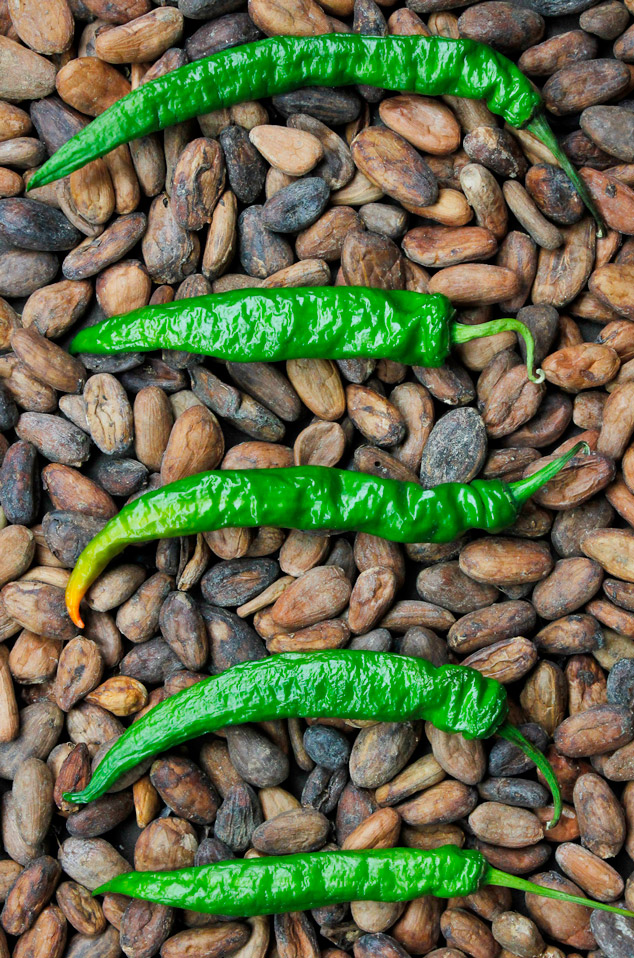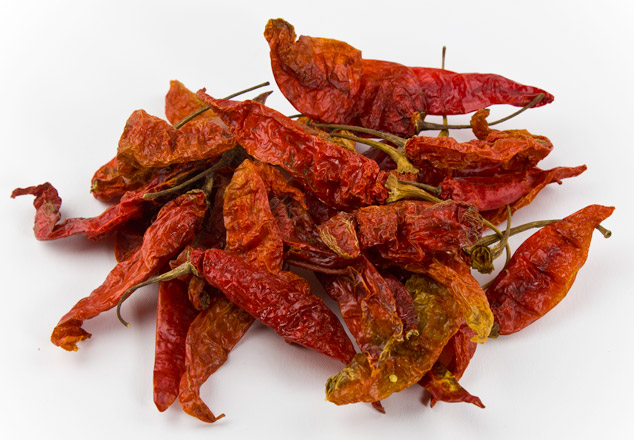Why is Capsicum annuum var accuminatum commonly known as chile chocolate?
Most Mayanists have heard or read that the Aztecs and other pre-Columbian peoples flavored their cacao drink with chili, achiote, and other spices. But so far I have not found any references to which kind of chili was used.
During Semana Santa this year I was photographing fruits, vegetables, and flowers from the native market of Antigua Guatemala. One of the chilies that we found in the market was called chili chocolate by everyone.
Hence my questions, is this the chili that was used to flavor chocolate? Since the chili is not chocolate color, how else would it get the name chili chocolate?
So the primary purpose of this web page is to openly ask the question, what is the origin of the term “chili chocolate” for Capsicum annuum var accuminatum.
It would be a good first step to look at the Nahuatl names for this or comparable chiles. Then find all the Mayan words. If any of them refer to cacao: there is your answer. Unfortunately we at FLAAR do not have a linguist on staff, and my library has been loaned to the Museo Popol Vuh for over a decade, so (due to traffic and parking and all that) we don’t have our own library easily available.
How to spell the word chili?
I have seen even botanical monographs spell the word chili, and with two l’s, chilli (in the same sentence ! (Berke and Shieh 2001:112; in “Handbook of Herbs and Spices” edited by K. V. Peter). Elsewhere in the same book it is spelled chillie (p. 31). I am aware that us Americans are pretty sloppy with spelling in recent years, but I would expect better editing in a major monograph on spices.
Appearance of chile chocolate
Chile chocolate is long and not as plump as a jalapeño. Chile chocolate comes in red color and green color. Color may be based on whether mature (red) or immature (green). When I bought chiles at the market in Sacatapequez, there were both green and red mixed in the bag that the local Maya person gave me.
Species and varieties of chile chocolate
I had to search the Internet two days until I found C. annuum var accuminatum listed by several authors (both cited by Ayala).
Don’t confuse the chile chocolate of Guatemala
- Long, thin, red or green
- with long, thin, red or green Sweet peppers.
The latter are sweet; the former are picante. The sweet ones are maroon-brown color (not “chocolate” color, but closer than green!)
Both are called “chocolate,” one because it is close to chocolate color. If you want to get help figuring out all the varieties of Capsicum annuum, just Google plate names sorting Capsicum annuum
Where can you see chile chocolate
Ayala lists Pacífico, Nueva Concepción, Escuintla, y La Máquina, Suchitepequez, así como en los departamento se Santa Rosa, Jutiapa y Baja Verapaz as locations you can see chile chocolate (no pagination, fotos 5-8 and 5-9).
Guzman et al. list Samayac, Suchitepequez, and Cubulco, Baja Verapaz, Guatemala (p. 365).
Improvements to Mayanist research on chiles
The monograph on Ethnology of the Mayas of British Honduras is a wonderful example of how Mayanists have wasted the opportunity to learn about the plants used by the Maya. J. Eric S. Thompson simply uses the word “chili”. He never seems to make the slightest attempt to understand which of many potential chili plants he is talking about: or even if it was sweet or hot.
Summary:
What I learned during my research on chile chocolate
First I learned that the word “chocolate” was used in several different ways with respect to chilies. Several chilies are named “…chocolate…” because of their vaguely chocolate color. This is not at all the case with Capsicum annuum var accuminatum. Chile chocolate is bright green (when immature) or bright red (when mature).
Second thing that I (as a layperson; I am not a botanist; I learn about plants by sheer initiative and hours reading and years in the rain forests) have learned is that chilies are kind of like squash: there are a few basic species but may be dozens of variations under the same species binomial. And any two varieties can be absolutely as different looking as night is from day.
So trying to learn, and distinguish, one chile from another is comparable to learning about squash. Both were major items in the Mayan diet of a thousand years ago, and still today.
It is amazing, that with dozens, scores, or probably hundreds of varieties of chiles of Mesoamerica, that it is possible to identify the primary chile used for flavoring cacao a thousand years ago.
It is very easy actually: go to any local market where cacao beans are sold and where the local people drink Maya style cacao beverages.
Simply ask the local women who are selling products in this market, “which chile do you use with cacao?” They will tend to point to a single chile: chile chocolate.
So doing research in the markets in many ways makes more sense than being stuck back at a university or in a library or floating around the Internet.
The best people to write about cacao flavoring are the Maya people, especially the Kekchi, since cacao grows in their homeland areas, such as Cajabon. But there are also the major cacao growing areas of the Costa Sur which were neither Kekchi nor necessarily fully “Mayan” in pre-Columbian times. Remember, there were several other cultures in Mesoamerica besides the Maya, especially on the active trade routes between Mexico, through Guatemala down through Honduras or El Salvador to Costa Rica.
I was pleasantly surprised how easy it was to find the one chile used to flavor cacao. I wish it were that easy to find the several other flavorings such as Smilax and Itsimte.
Bibliography and resources on chilies
www.ethno-botanik.org/Capsicum/Fotoindex_Chili_Paprika_Capsicum.html
One of the most helpful web sites; albeit auf Deutsch. Fortunately I can read it, but woiuld be nice to find a comparable web site in English; or Spanish (though Ayala’s book is pretty close).
The first batch of references are thouse listed by Ayala.
- Le Ik, Los chiles en Guatemala. Universidad de San Carlos de Guatemala Facultad de Agronomía.
- 1995
- Caracterización de algunos cultivos nativos de Guatemala. Guatemala, USAC, Facultad de Agronomía. 172 pages.
- 2003
- Los huertos familiares de Alta Verapaz y la conservación in situ de los recursos genéticos de Capsicum spp. In USAC, Facultad de Agronomía, Instituto de Investigaciones Agronómicas. 2003. Informe de investigación. Guatemala. 43 pages.
- 2001
- Los chiles del Peten. Tikalia 19(1):29-44.
- 1975
- Arboles de Costa Rica. Vol. I. Centro Cientifico Tropical, San Jose, Costa Rica. 545 pages.
- 1999
- Peppers vegetable and spice capsicums. New México, US, New México University Las Cruces, Departament of Agronomy and Horticulture.194 pages.
- 1987
- Caracterización agromorfológica y bromatológica de 30 cultivares de chile (Capsicum sp.) nativos de Guatemala, en el valle de La Fragua, Zacapa, Guatemala. Tesis Ing. Agr. Guatemala, USAC. 73 pages.
- 2001
- Caracterización agromorfológica de 13 cultivares de chile cobanero (Capsicum annuum var. annuum) bajo condiciones del área de influencia del parque nacional Lachua, Alta Verapaz. Tesis Ing. Agr. Guatemala, USAC. 78 pages.
- 1993
- The pepper garden. Berkeley, California, US, Ten Speed Press. 258 pages.
- 1987
- Evaluación de características agronómicas de nueve cultivares de chile picante (Capsicum annuum var. annuum ) en Cuilco, Huehuetenango. Tesis Ing. Agr. Guatemala, USAC. 60 pages.
- 1982
- Presente y pasado del chile en México. México, Instituto Nacional de Investigaciones Agrícolas. Secretaria de Agricultura de México. 80 pages.
- 1998
- Capsicum y cultura: la historia del chili. 2 ed. México, Fondo de Cultura Económica. 203 pages
- 2000
- Recolección y caracterización de cultivares de chile picante (Capsicum spp.) en el valle del Polochic, Alta Verapaz. Tesis Ing Agr. Guatemala, USAC. 56 pages.
- 2000
- Minor crops of Mesoamerica in early sources (I) leaf vegetables. Genétics Resources and Crop Evolution 47:527-540.
- 2000
- Minor crops of Mesoamerica in early sources (II) herbs used as condiments. Genétics Resources and Crop Evolution 47:541-552.
- 2004
- Caracterización morfológica de 36 cultivares de chile (Capsicum spp.) de huertos familiares de Alta Verapaz. Tesis Ing. Agr. Guatemala, USAC. 52 pages.
- 1981
- Descripción de tipos y cultivares de chile (Capsicum spp.) en México. México, Secretaría de Agricultura y Recursos Hidráulicos México. 39 pages.
- 2000
- Colecta y caracterización in situ de los chiles del departamento del Peten. Tesis Ing. Agr. Guatemala, USAC. 95 p.
- 1988
- Caracterización de 25 cultivares de chile (Capsicum spp) del sur oriente de la república de Guatemala. Tesis Ing. Agr. Guatemala, USAC. 60 pages.
- 1984
- Caracterización de 39 cultivares de chile (Capsicum spp.) provenientes del altiplano de Guatemala bajo condiciones de Chimaltenango. Tesis Ing. Agr. Guatemala, USAC. 134 pages.
- 1995
- Peppers: The Domesticated Capsicums. New edition. University of Texas Press. 274 pages.
- 2001
- Chile Peppers. Brooklyn Botanic Garden. 112 pages.
- 2009
- The Complete Chile Pepper Book: A gardener’s guide to choosing, growing, presesrving, and cooking. Timber Press. 336 pages.
- 1992
- Chiles to Chocolate: food the Americas gave the world. University of Arizona Press.
- 2011
- Pick a Pepper: A Photographic Guide to Chile Peppers, their History, and Uses. CreateSpace. 88 pages.
- 1991
- The Great Chile Book. Ten Speed Press.
then some books (none of which I have), but frankly I bet the Guatemalan publications, and the occasional Mexican one (listed above) should be enough. Keep in mind the above list is only what was available when Ayala wrote his book on chile.
First posted March 26, 2013.


